
HOW TO USE INTEGRATED LINEAR LIGHTING
Jun 02,2020
The beauty of linear LED lighting is its flexibility. LED linear strips open up a world of illuminating possibilities for your home, as they can be hidden, housed in interesting profiles, and integrated into all kinds of joinery and architectural details.
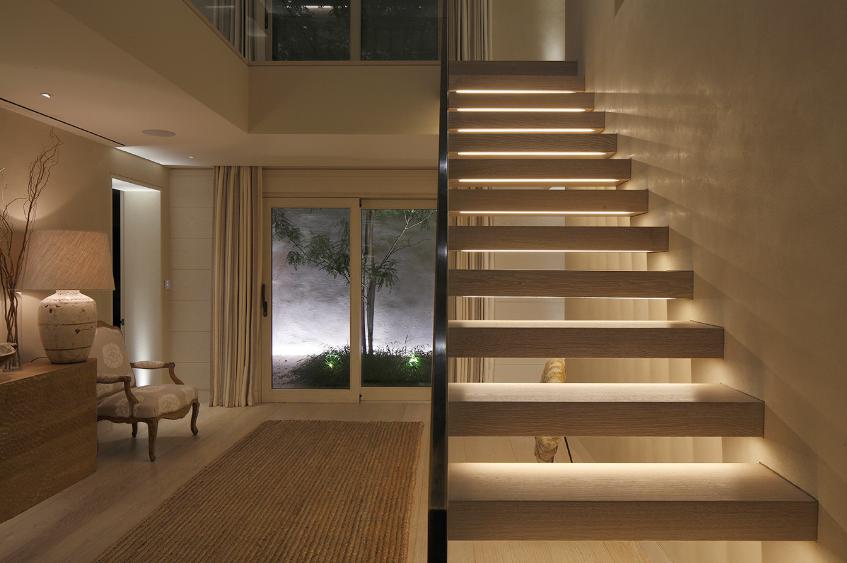
Linear LED lighting strips can be used as small or as large as you like, offering endless design possibility. A range of lighting effects, patterns and atmospheres is achievable using integrated linear lighting all over your home, complemented with floor, wall and spot lighting. It’s all about playing with shape, shadows and space to create the best effect possible.
linear lighting into contemporary staircase
What is linear lighting?

If you’re coming to lighting design for the first time, you may wonder what linear LED lighting is, and why it’s a home-lighting buzz phrase. These linear lights come in the form of a flexible LED strip. We tend to use them within a profile, to diffuse the light better and also to protect the strip from dust or water, depending on where it’s used. The light source can then be integrated and concealed within joinery or shelving.
Uses for linear lighting
Linear lighting is used to increase light levels, to accent objects such as ornaments or books, to shed light on workspaces, and to offer appealing layers of light in a room. It can also be used outside, integrated within garden steps, patios, or walls for example.
Equally, integrated linear lighting can be used for dramatic designs, in linear suspension lighting, or vertically in walls to add originality to a hallway, perhaps, or to form a creative lighting fixture in an ultra-contemporary home. These versatile strips can be slotted into curved or linear profiles, and being small and discreet allows the designers great artistic freedom. Concealed linear LED lighting is also prevalent in sensitive traditional home lighting design, with only the light glow visible.
linear light source integrated into double height shelving
Linear lighting in shelving
Integrating linear lighting into shelving adds drama and depth to a room, with books or favourite ornaments highlighted from an apparently hidden light source. When lighting books, we recommend putting the light source at the front of the shelf to provide a general wash. For a more theatrical effect, we can put an object in silhouette by positioning the linear LED light at the back. As with all design, we can play with position, symmetry, asymmetry, abstract design and classic patterns.
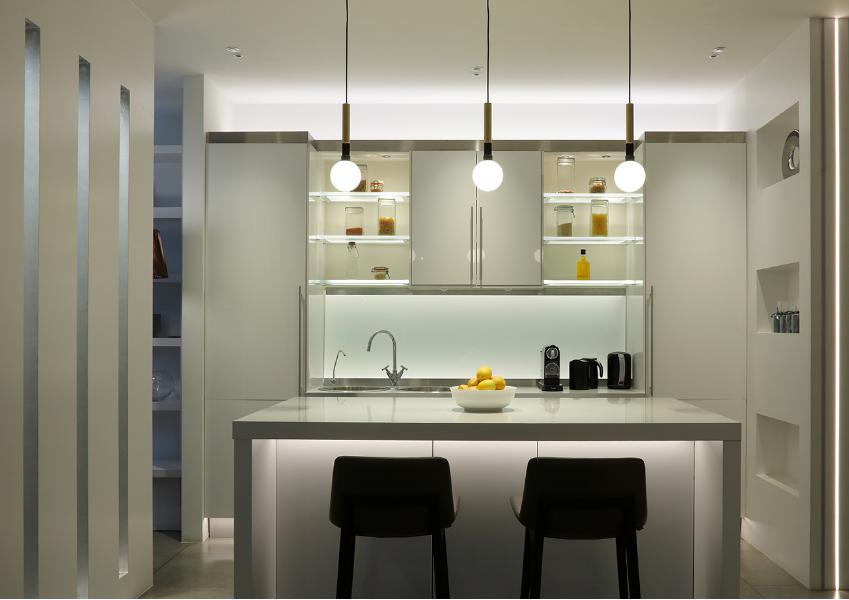
linear lighting integrated into contemporarykitchen
Task lighting using integrated linear lighting
The obvious area for task lighting at home is kitchen work tops. LED linear lighting is brilliant for highlighting chopping and prep areas. Spotlights also work, but tend to provide pools or accents of light, where the strips can provide a more diffused light over a wider surface area, even using a continuous length of light above a worktop if preferred. The linear LED strip or profile can be integrated into suspended cupboards to provide this kitchen task lighting.
Other places in our homes where we do everyday tasks include make-up tables, workbenches, perhaps even a piano keyboard, which call all utilise linear lighting. We’re always adaptable and imaginative in our lighting design.
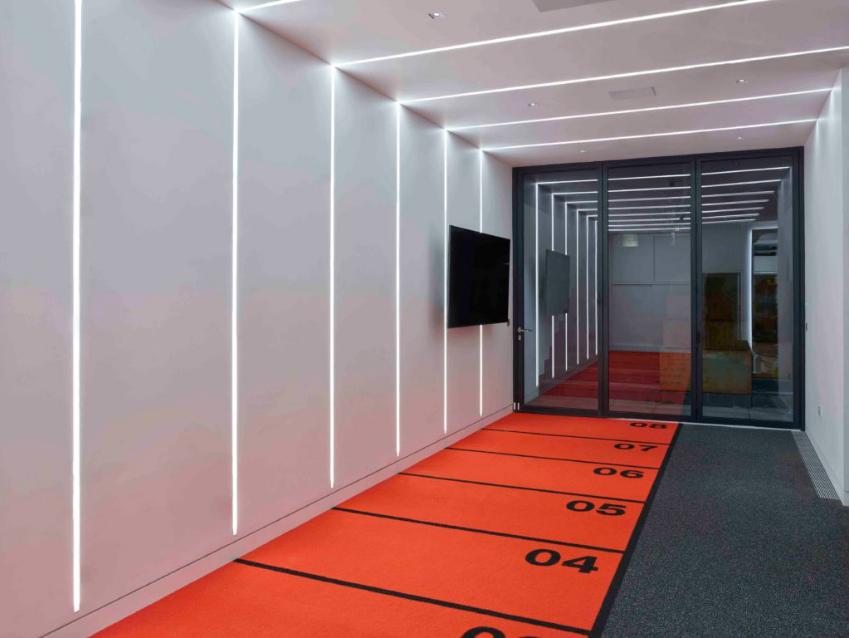
Feature lighting with linear lighting
Lighting a few key features around a room adds interest and balance to the atmosphere of the space. And linear lighting can be used everywhere: on stairs, in hallways, kitchens, living areas, studies, bathrooms, outside, and for all sorts of commercial spaces such as gyms, offices or restaurants. It can be used both to emphasise features, and to create general mood light.
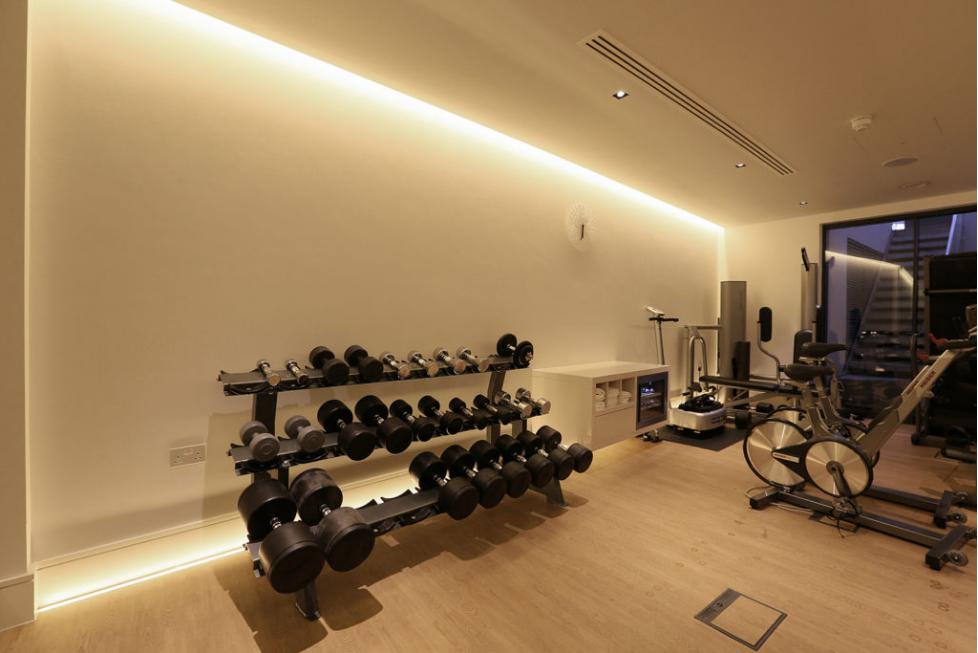
Wash lighting with integrated linear lights
Linear LED lights offer a pleasing wash of light when integrated into architectural elements such as a ceiling cove. Where a downlight points the light downwards, an LED strip integrated to the cove provides soft and general wash to the ceiling.
Linear LED lighting can also be integrated in a shadow gap to wash the walls. For example, over feature panelling, curtains, a shower area, or a relaxation space.
Another popular use for linear LED strips is to integrate them on top of a piece of joinery to uplight the ceiling, filling dark corners with diffused light to add general brightness. This can be a simple surface-mounted linear lighting profile on top of cupboards or any tall piece of furniture.
under counter and shelf lighting in kitchen
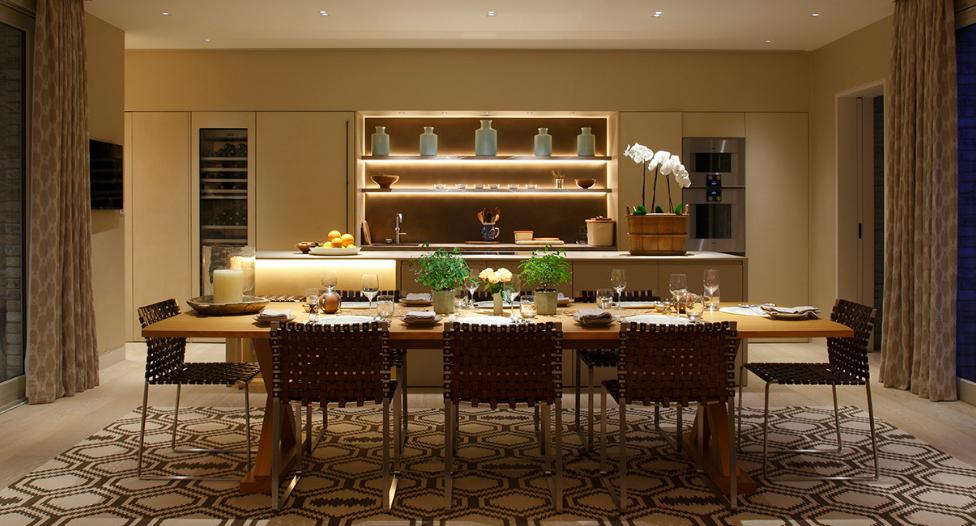
Layers of light using linear lighting
In modern lighting design, we talk about layers of light. It’s a simple term, literally meaning lighting at different heights for different purposes to create a more interesting overall scheme. A current trend that looks great is low-level lighting. For example, in a kitchen we often add integrated linear lighting to the bottom of a kitchen island. This draws interest at floor level and makes what is often a bulky feature appear less heavy.
This low-level lighting is also effective around stairs, or outdoor steps. The linear LED strip can be integrated underneath a step, offering a pretty and practical brightness onto the step below. Or, at mid level, the linear LED strip could be integrated into a stair handrail. If using integrated linear lighting outside we recommend an LED strip with an IP rating of 65, which just means it’s protected from water.
Scene setting options with linear lighting
By working with different circuits, Can create alternative scene setting options within the same space, because, for example, a coffee morning requires a different light mood to a dinner party. Linear LED lighting can be dimmed to add to this flexibility. Mood settings can be pre-programmed and operated via remote devices, or adjusted manually, depending on what level and feel of light you’re after.
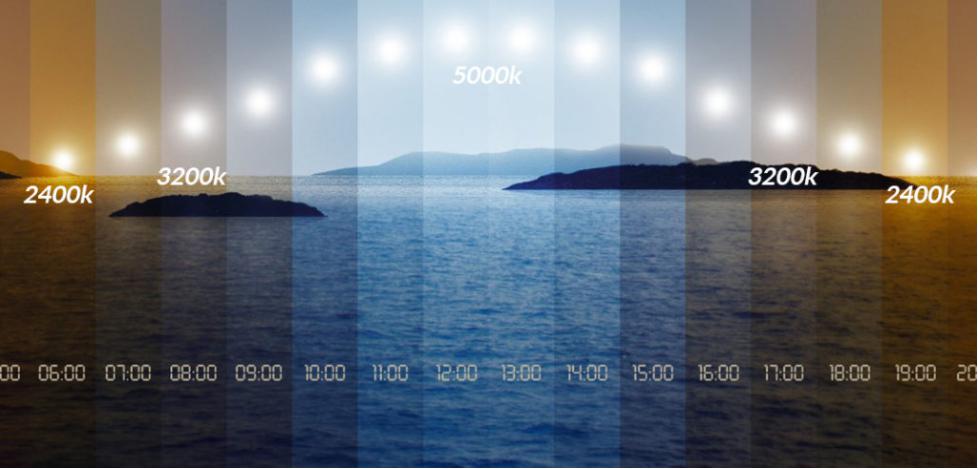
LED lighting colour temperature
Colour temperature is always important in lighting – literally the colour of light can range from warm to cold. This is measured in kelvins. 2700 kelvin which is a warm light, but not too warm or too cold. It’s the Goldilocks of lighting temperature: just right!
2400 kelvin which is a bit warmer, and works well in living rooms, sitting areas and bedrooms, where a cosy atmosphere is required. Here integrated linear lighting in the right colour temperature can be enhanced with decorative lighting such as table lamps, wall lamps, floor lamps and pendants.
This article comes from JOHNCULLENLIGHTING company
- Latest news
34 genius hacks for LED strip lights
Apr 02,2021LED Strip Lights: How Are They Made?
Nov 30,2020LIVING ROOM LIGHTING IDEAS
Oct 30,2020LED LIGHTING VS. FLUORESCENT LIGHTING – THE FACTS
Sep 29,2020HOW TO PLAN YOUR KITCHEN LIGHTING
Aug 27,2020LIGHTING DESIGN: 5 TIPS FOR INTERIOR DESIGNERS
Jul 31,2020HOW TO USE INTEGRATED LINEAR LIGHTING
Jun 02,2020